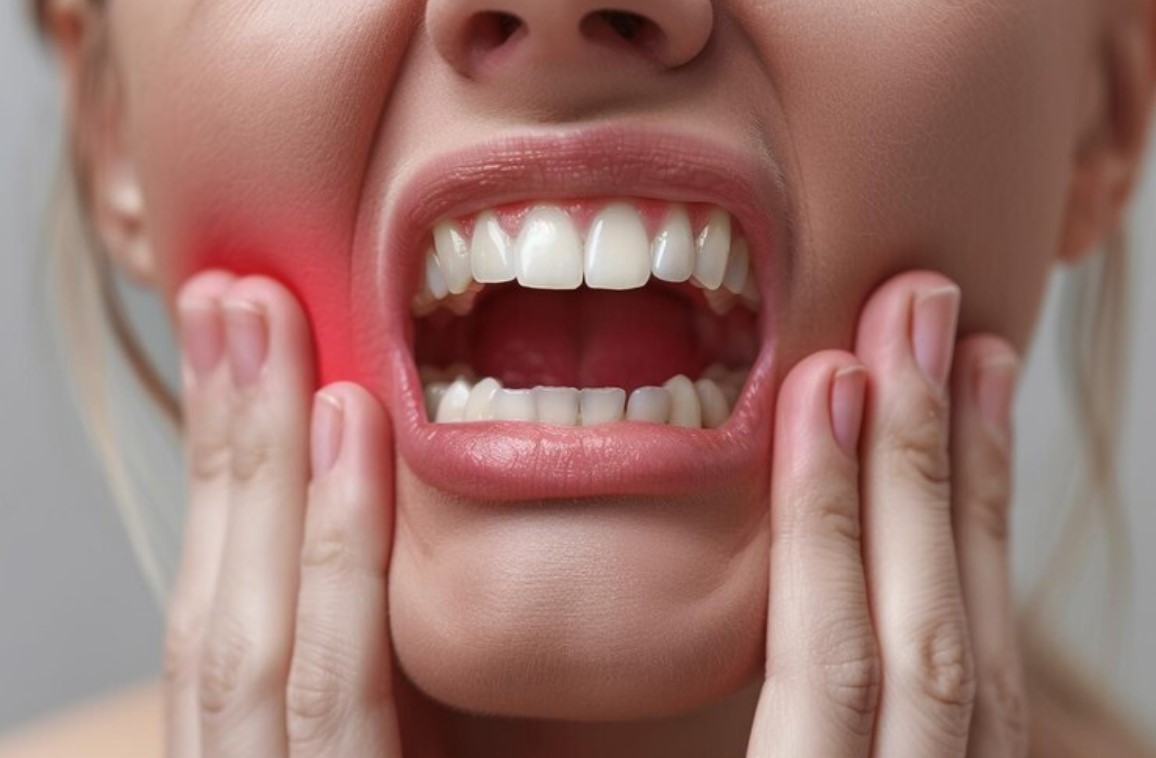Welcome to a journey into the world of dental health! In this guide, we’ll delve into the various types of teeth diseases that can affect your oral health and overall well-being, including common types of dental diseases such as gingivitis, periodontitis, and dental cavities. From cavities to gum disease, let’s uncover the dangers lurking in your mouth and learn how to protect your precious smile.
Tooth Decay: The Silent Destroyer
The Culprit: Bacteria in Plaque
It is a type of dental disease that can lead to serious complications if not addressed promptly by a dentist, emphasizing the need to know about dental care.
Tooth decay begins when bacteria in plaque feed on sugars from food and produce acids. These acids gradually dissolve the protective enamel layer, creating tiny holes or cavities in the teeth. Regular brushing and flossing help remove plaque and prevent acid buildup, safeguarding enamel from erosion and decay, which is fundamental for preventing dental caries and other oral health problems.
Symptoms and Signs: Recognizing Decay
Early detection of tooth decay is crucial for timely intervention and the prevention of further damage. Common signs of decay include:
- Tooth Sensitivity: Increased sensitivity to hot, cold, sweet, or acidic foods and drinks.
- Toothache: persistent or intermittent pain or discomfort in the affected tooth.
- Visible Holes or Pits: Formation of small holes or pits on the surface of the tooth.
- Discoloration: dark spots or discoloration on the enamel surface are often a warning sign of dental caries.
- Bad Breath: persistent bad breath despite regular oral hygiene practices.
- Gum Inflammation: Swelling or tenderness of the gums surrounding the affected tooth.
- Prolonged Food Lodging: Food particles get stuck in crevices or cavities, leading to discomfort.
Gum Disease (Gingivitis and Periodontitis): A Battle Beneath the Gums
These are common types of dental diseases that require careful management to prevent tooth loss and other complications.
Gingivitis vs. Periodontitis: Progression and Consequences
Gingivitis is the initial stage of gum disease, one of the most common dental and oral diseases, characterized by inflammation of the gums. If left untreated, gingivitis can progress to periodontitis, a more severe form of gum disease. These are common types of oral diseases that significantly affect dental health. In periodontitis, the inflammation extends below the gum line, causing damage to the soft tissues and bone supporting the teeth. This can lead to gum recession, loss of bone structure, and eventually tooth loss if not addressed promptly.
Warning Signs: Indicators of Gum Disease, a critical aspect of maintaining good oral health
- Red, Swollen Gums: Inflammation of the gums is one of the earliest signs of gum disease. Healthy gums should appear pink and firm, so any redness or puffiness may indicate an underlying issue.
- Receding Gums: As gum disease progresses, the gum tissue may start to pull away from the teeth, exposing more of the tooth’s surface and creating a “long in the tooth” appearance.
- Persistent Bad Breath: Also known as halitosis, persistent bad breath can be a sign of gum disease. Bacteria trapped in the pockets between the teeth and gums produce foul-smelling gases that contribute to bad breath.
- Loose Teeth: Advanced gum disease can cause the supporting bone structure to weaken, leading to the loosening of the teeth. This can make chewing and speaking difficult and may eventually result in tooth loss if not treated.
- Gum Bleeding: Bleeding gums, especially during brushing or flossing, may indicate gum inflammation and early-stage gum disease. It’s essential not to ignore bleeding gums, as it can be a sign of underlying oral health issues.
- Gum Sensitivity: Increased sensitivity or tenderness of the gums, especially when pressure is applied, may indicate gum disease. Healthy gums should not be painful or sensitive to touch.
Tooth Infections (Abscesses): Danger Below the Surface
Understanding Abscesses: Causes and Complications is an integral part of addressing common dental problems.
An abscess is a painful dental condition caused by a bacterial infection, highlighting the importance of addressing dental and oral diseases promptly. It is a type of dental disease that requires you to see your dentist immediately. These infections typically occur when bacteria invade the pulp chamber or root canal of a tooth, usually as a result of untreated tooth decay, cracked or damaged teeth, or advanced gum disease. The infection can also spread from neighboring teeth or through the bloodstream from other parts of the body.
The complications of untreated abscesses can be severe and even life-threatening. The infection can spread to surrounding tissues, causing swelling, inflammation, and pus formation. In some cases, the infection can extend into the jawbone, leading to bone loss and potentially resulting in the loss of the affected tooth. Moreover, abscesses can also lead to systemic complications if the bacteria enter the bloodstream, such as sepsis or infective endocarditis, underscoring the linkage between oral health problems and overall health. It underscores the importance of regular dental care in preventing such dental diseases.
Seeking Treatment: Immediate Action Required
Seeing your dentist as soon as symptoms arise can prevent types of dental diseases from progressing, whether it be gum disease, tooth decay, or complications from wisdom teeth.
Immediate dental care is crucial when dealing with abscesses to prevent the spread of infection and preserve the affected tooth or teeth. Treatment typically involves draining the abscess to remove the pus and alleviate pressure and pain. In some cases, root canal therapy or tooth extraction may be necessary to eliminate the source of the infection and prevent it from recurring. These treatment options are crucial in managing common dental problems effectively.

Antibiotics may also be prescribed to help control the infection and prevent further complications. However, antibiotics alone are not sufficient to cure an abscess and should be used in conjunction with other dental treatments. Your dentist may recommend a dental implant if the tooth cannot be saved. Delaying treatment for an abscess can lead to worsening symptoms, an increased risk of complications, and more extensive and costly dental procedures in the future.
Tooth Sensitivity: A Signal of Trouble
Causes of Sensitivity: Unraveling the Mystery
Tooth sensitivity is a common dental issue that can significantly impact daily life. It occurs when the protective enamel layer of the tooth becomes compromised, exposing the underlying dentin and nerve endings to external stimuli, a scenario often seen in 15 common dental problems. Several factors can contribute to tooth sensitivity, including:
- Enamel Erosion: The erosion of tooth enamel, often caused by acidic foods and drinks, aggressive brushing, or acid reflux, can expose the sensitive dentin layer underneath, leading to sensitivity.
- Gum Recession: Receding gums, which can result from periodontal disease, brushing too hard, or aging, expose the tooth roots, which are not protected by enamel and are more susceptible to sensitivity. This is a common issue that your dentist may address by suggesting suitable treatments or habits to mitigate further recession. This condition is a common dental problem associated with poor oral hygiene.
- Tooth Decay: Cavities or tooth decay can cause sensitivity when the decay reaches the inner layers of the tooth, near the nerve endings.
- Tooth Fractures or Cracks: Fractured or cracked teeth can expose the dentin or pulp, leading to sensitivity when exposed to temperature changes or pressure.
- Dental Procedures: Certain dental treatments, such as teeth whitening, dental cleanings, or restorative procedures, can temporarily increase tooth sensitivity.
Protecting Against Sensitivity: Prevention and Management
While tooth sensitivity can be uncomfortable, there are steps you can take to prevent and manage it effectively, including regular dental check-ups to diagnose and treat any underlying common dental problems early.
- Practice good oral hygiene: Brush your teeth twice daily with fluoride toothpaste and floss regularly to remove plaque and prevent enamel erosion and decay.
- Use a Soft-Bristled Toothbrush: Choose a toothbrush with soft bristles and avoid brushing too vigorously, as aggressive brushing can wear down enamel and contribute to sensitivity.
- Avoid Acidic Foods and Drinks: Limit your consumption of acidic foods and beverages, such as citrus fruits, sodas, and sports drinks, which can erode enamel and increase sensitivity.
- Consider desensitizing toothpaste: Use toothpaste formulated for sensitive teeth that contains ingredients like potassium nitrate or fluoride to help block pain signals and strengthen enamel.
- Seek professional advice. If you experience persistent or severe tooth sensitivity, consult your dentist. Regular dental check-ups can help prevent this discomfort. They can assess the underlying cause of your sensitivity and recommend appropriate treatments, such as fluoride treatments, dental sealants, or bonding agents, to protect exposed dentin and reduce sensitivity.
Conclusion:
Understanding the different types of teeth diseases is crucial for maintaining optimal oral health and preventing serious dental problems down the road. This includes a wide range of types of dental diseases. By staying vigilant, practicing good oral hygiene habits, and seeking timely dental care, you can protect your smile and preserve your teeth for a lifetime of health and happiness.


